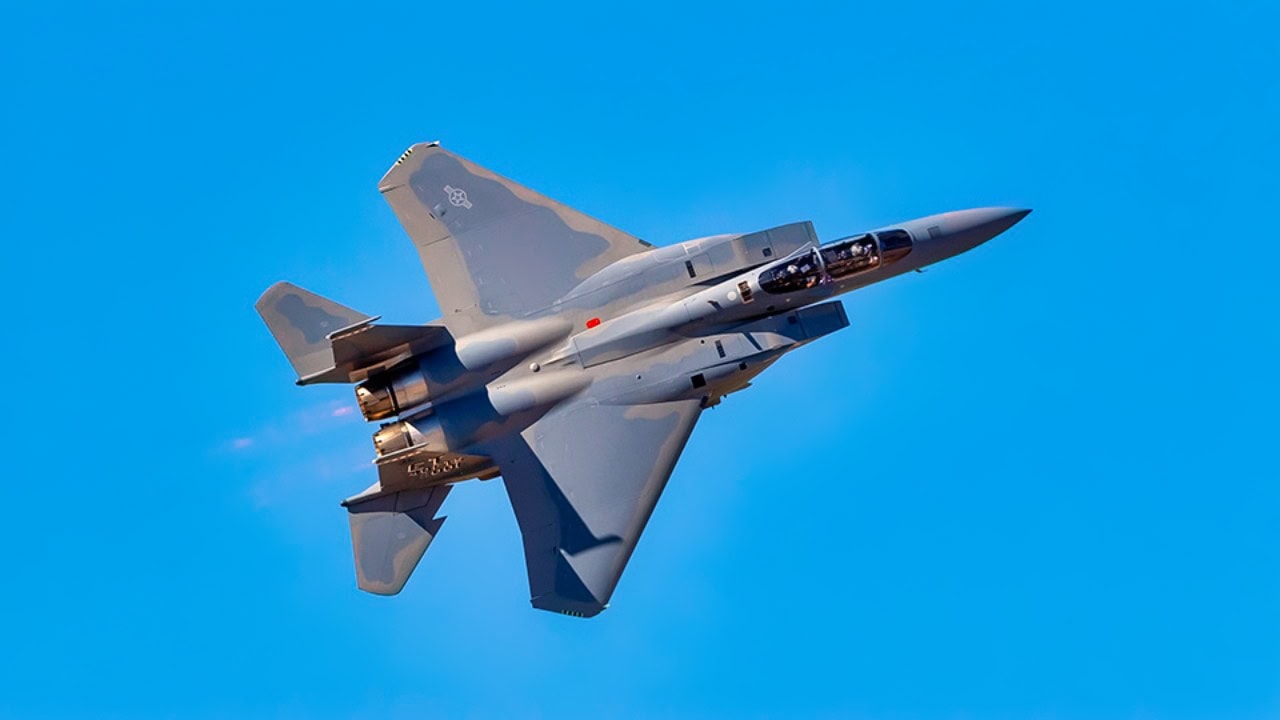As one of the most famous fighter jets to never exist, the experimental F-15SE Silent Eagle variant presents somewhat of a paradox.
While it fell short of its initial goal, the project generated technologies and developmental strategies woven into the now-famous F-15EX.
Regarded as a “4th-Generation Plus” breakthrough fighter jet, the F-15EX incorporates many 5th-gen-like attributes and appears to lower the famous fighter’s radar signature.
The F-15SE Silent Eagle Explained
Which attributes in particular may have emerged from the F-15SE? Perhaps of equal significance, why were the ambitious efforts to build and present the F-15 Silent Eagle ultimately unsuccessful?
The Boeing F-15SE, which emerged in 2009, was intended primarily to present the jet to allied foreign customers.
However, the aircraft did not exist, and many of its innovations were instead directed to the F-15EX advanced variants.
The shape of the F-15SE does look slightly stealthier than the preceding variants as it incorporated a somewhat more rounded wing-body configuration and was built with a new conformal weapons bay and conformal fuel tanks to reduce radar signature.
The advantage of this was that it improved stealth properties while also greatly expanding the aircraft’s weapons-carrying capacity. The Silent Eagle was also built with “canted vertical stabilizers,” structures also intended to reduce radar signature. “Canted” or “angled” stabilizers are designed to deflect electromagnetic pings away from airborne radar.
Using two stabilizers makes the structures shorter, a design method used to lower the overall vertical height of the aircraft. While angled stabilizers may deflect radar return signals somewhat, they are protruding structures likely to generate rendering, unlike a fully horizontal flying wing stealth bomber configuration.
The F-15SE was also reportedly engineered with extensive radar-absorbing materials designed to decrease any return electromagnetic return signal, a technological method used in most stealth platforms.
“Not so Silent Eagle?”
However, despite being arguably stealthier than some of the F-15 variants that preceded it, the F-15SE looks a long way from the kind of F-22 and F-35-like stealth effectiveness for several reasons.
The aircraft was built with an internal weapons bay, yet extra pylon hardpoints were added beneath the wings.This increases weapons’ capacity for the attack but also adds protruding, externally angled structures to the aircraft’s body, shapes, edges, and contours likely to generate a much larger radar return signal or render to ground and air-based enemy radar systems.
A quick look at the configuration of the Silent Eagle aircraft seems to indicate that, arguably, the aircraft is not particularly stealthy when compared with 5th-gen aircraft.
An F-22, for example, has what appears to be a completely smooth exterior structure without protruding shapes. Its inlets are built into the fuselage much more, whereas the inlets on the F-15SE look sharply angled and completely external to the aircraft’s body.
The F-22 and F-35 can operate with smooth bolts, seams, and an internal weapons bay to ensure a smoother, flatter configuration.
Influence on F-15EX Eagle II
Sure enough, the body of the F-15EX Eagle II mirrors the more horizontal blended wing-body type of smoother fuselage used in the Silent Eagle, and the wings do connect to the body of the aircraft with smooth, rounded horizontal structures flattening the aircraft.
This is something which, of course, increases stealth characteristics and reduces radar cross-section. The initial F-15EX aircraft do not have conformal fuel tanks, as they are optimized for aerial agility instead of a longer-range missile truck configuration.
However, conformal fuel tanks can also be added to the aircraft.
This being said, a close look at the mid-body section of the F-15EX does slightly resemble the body structure of an F-22, particularly its dual engine configuration.
About the Author: Kris Osborn
Kris Osborn is Military Technology Editor of 19FortyFive and the President of Warrior Maven – Center for Military Modernization. Osborn previously served at the Pentagon as a highly qualified expert in the Office of the Assistant Secretary of the Army—Acquisition, Logistics & Technology. Osborn has also worked as an anchor and on-air military specialist at national TV networks. He has appeared as a guest military expert on Fox News, MSNBC, The Military Channel, and The History Channel. He also has a Masters Degree in Comparative Literature from Columbia University.

